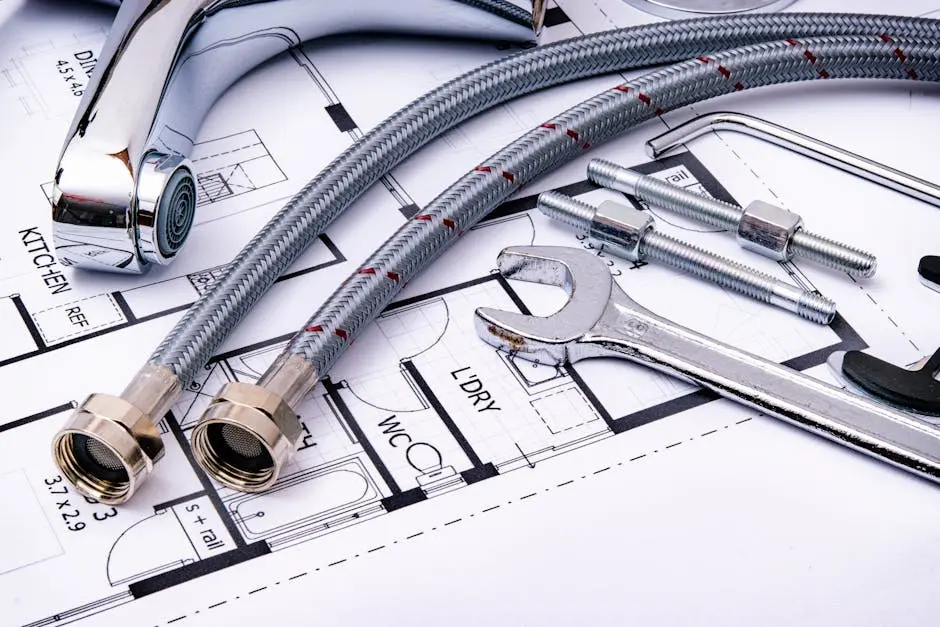8 Common Backflow Prevention Mistakes and How to Avoid Them
Backflow prevention is crucial in maintaining safe and clean water supplies. However, there are several common mistakes that can compromise this essential system. In this article, we'll explore these pitfalls and offer practical advice on how to sidestep them.
1. Ignoring Regular Maintenance
Regular maintenance is the backbone of any effective backflow prevention system. Skipping scheduled checks can lead to small issues becoming big problems. Don’t leave things to chance; set reminders and stick to them. Regular checks not only extend the life of your devices but also ensure compliance with local water authority standards.
It's important to understand that maintenance routines should be tailored to the specific requirements of your system. For instance, systems in areas with hard water might require more frequent inspections due to mineral buildup. Regularly reviewing your water quality and adjusting your maintenance schedule accordingly is a proactive approach that saves both time and money.
2. Improper Installation Techniques
A system is only as good as its installation. A poorly installed backflow prevention device can fail when you least expect it. Always hire professionals with a good track record to avoid costly errors. An experienced installer will ensure that each component is correctly aligned and secure, reducing the risk of premature failures.
When selecting an installer, it’s vital to verify their credentials and ask for references or reviews from previous projects. Investing in skilled labor may seem like an additional expense initially, but it’s an investment in the reliability and safety of your system. Additionally, professional installers are more likely to be familiar with the latest technological advancements in backflow preventers, ensuring your system is up-to-date.
3. Overlooking Local Plumbing Codes
Local plumbing codes are in place for a reason. Overlooking these can lead to non-compliance issues and miscommunication. Be sure to understand and follow all relevant codes and regulations. These guidelines are not only legislative requirements but also essential for maintaining public safety and system efficacy.
Consult the local authorities or a knowledgeable plumbing professional if you're unsure about the codes applicable to your area. Staying compliant ensures you avoid hefty fines and safeguard against potential hazards. Codes frequently adjust, reflecting new research or technologies, so regular review is necessary.
4. Neglecting to Test Backflow Preventers
Testing your backflow preventers on a regular basis ensures they're functioning properly and can prevent potential contaminants. This is a crucial step that should never be ignored. It’s recommended to perform tests at least annually or according to manufacturer guidelines to identify any signs of wear or malfunction.
Advanced testing might require specialized tools and expertise that aren’t typically available to the average user. In these cases, hiring a certified professional to conduct these tests is your best bet for obtaining accurate results. Documenting these tests helps you track the history of your devices and make informed decisions about replacements or upgrades when necessary.
5. Using Inappropriate Devices
Not all backflow prevention devices are created equal. Ensure the device you choose is appropriate for your system to avoid mismatches that can render the device ineffective. Factors such as system pressure, and water quality should influence your choice of device; consider consulting a specialist or doing extensive research to find the best fit.
Manufacturers often provide guidelines to help you choose the right device for specific applications, but it's always beneficial to verify this information with an expert in the field. Remember, the most expensive option is not always the best; suitability is key. Stay updated on new developments in the field to ensure your system benefits from the latest innovations.
6. Failing to Educate the Team
Knowledge is power. Educating your team about backflow prevention can go a long way in ensuring everyone understands the importance and functioning of the system, reducing human errors. Team training sessions and workshops are excellent opportunities to enhance skill levels and reinforce the safety culture within your organization.
Training should include not only basic operational knowledge but also emergency procedures in case of a system failure. Encourage an environment where curiosity and questions are welcome, fostering a more engaged and informed workforce. Reinforcing this knowledge frequently keeps it at the forefront of your team's priorities, especially with frequent personnel changes.
7. Not Accounting for Environmental Changes
Changing environmental conditions can affect backflow prevention solutions. Stay alert to these changes and adjust your strategy as needed, ensuring your system remains effective. Factors such as climate variations or urban development can alter water pressure and quality, requiring adjustments or additional preventive measures.
Integrating an adaptable strategy into your backflow prevention and management plans can help mitigate unexpected challenges. Keeping abreast of environmental trends can inform necessary adaptations to infrastructure as part of a proactive maintenance strategy, providing long-term resilience.
8. Discounting Seasonal Adjustments
Seasonal shifts can also influence water pressure and system needs. Make sure to adjust your backflow prevention measures accordingly throughout the year to maintain system integrity. For example, winter months might require steps to prevent freezing in outdoor systems, while in summer, higher demand may necessitate adjustments in pressure settings.
Preemptive adjustments in response to changing seasons are often effective at preventing potential complications. Consult the seasonal maintenance guidelines provided by manufacturers or enlist the help of a plumbing expert to anticipate the needs of different checks and modifications, ensuring your system functions optimally all year round.

